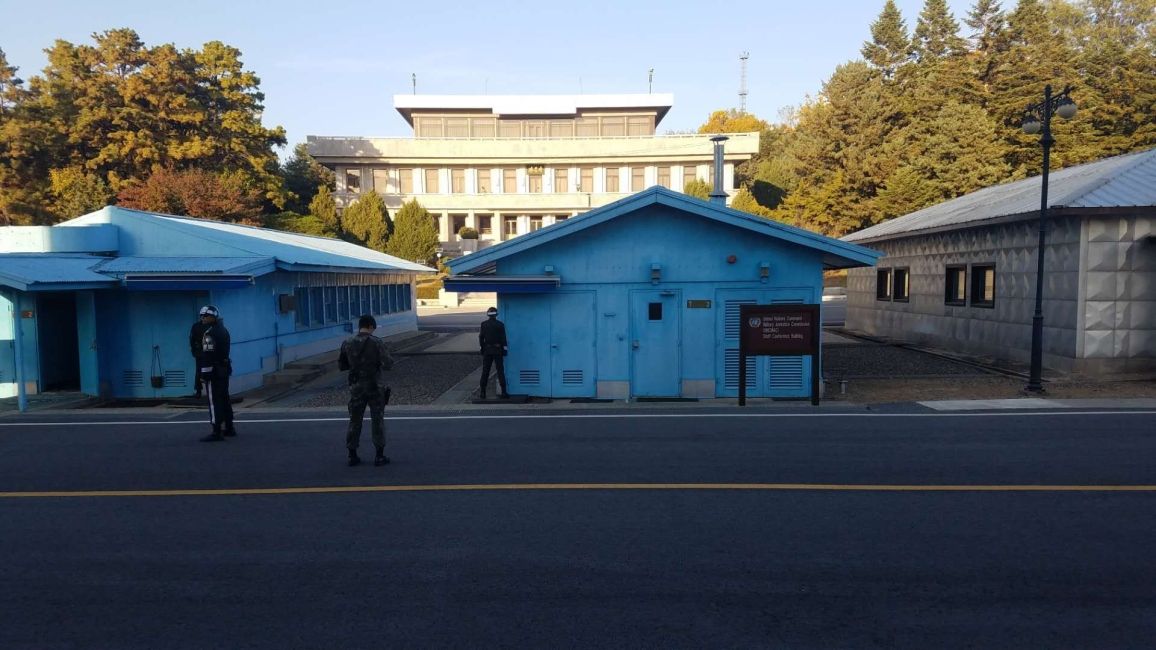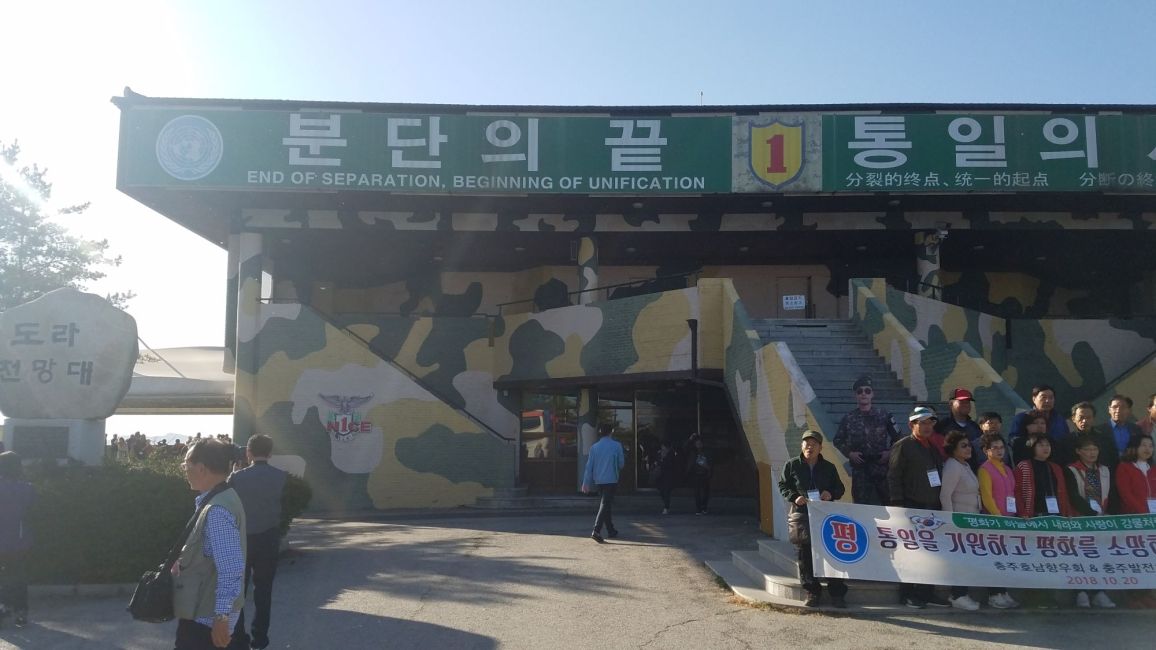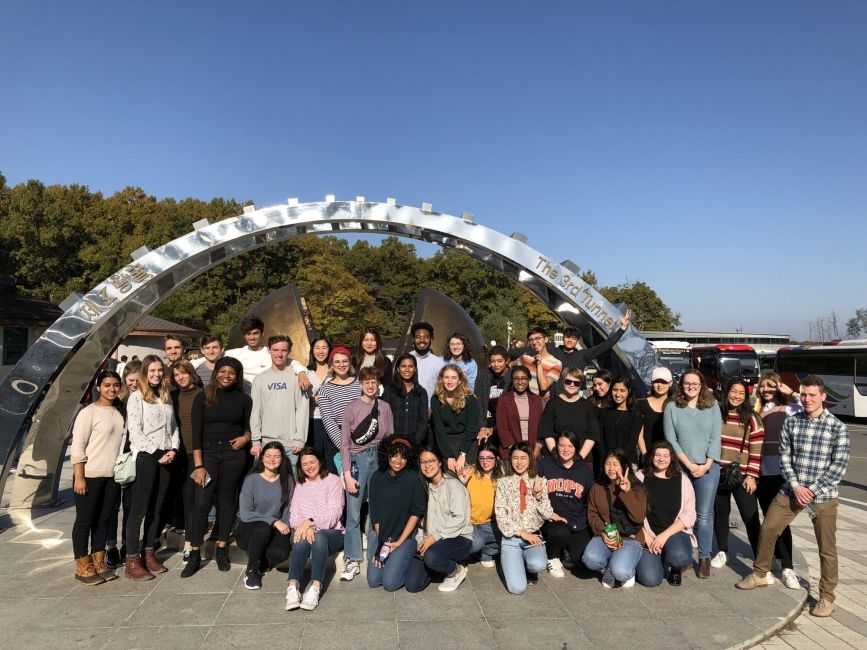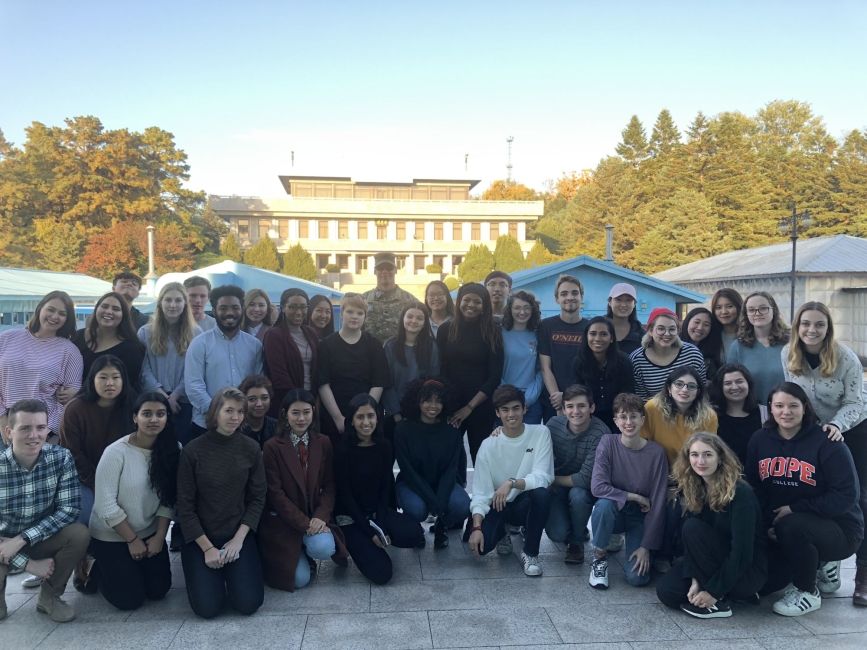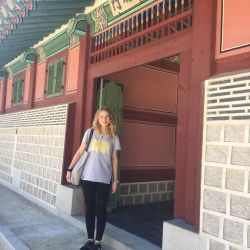The Last DMZ Tour
Maybe the title is misleading, but our group was technically the last to tour the DMZ as it is now. Due to the recent peace talks between South Korea and North Korea, supposedly the DMZ area will be going through an adjustment and in the near future will become a "Peace Park" meaning it may actually be a demilitarized zone free of guns or other weapons. Our group started out the day with a presentation explaining the history between North and South Korea. This presentation was very helpful for those who have never investigated the history between the country and gave us an idea of the area we were going to visit. Even though I am taking a class about North Korean politics and society, the lecture was interesting because CIEE invited a retired military veteran who served and lived in Korea for more than 25 years.
After the presentation, we headed off to the first stop which was the Third Tunnel. The Third Tunnel was found when South Korean military was informed by a North Korean Defector of its existence and began digging to intercept this tunnel. The purpose of the tunnel was most likely to invade South Korea. However, North Korea discovered that South Korea knew about this tunnel and claimed it was most likely a mine from before the war. North Korea blocked further entrance into the tunnel that would otherwise lead to North Korean territory and tried to diguse the scene to make it look like a coal mining zone. We had the option of climbing down into the South Korean-made tunnel that was meant to intercept North Korea's tunnel; however, we were not allowed to take pictures on the way down nor have our phone as we hiked down. The walk was very steep but interesting to think that these were the measures North Korea was willing to go to invade the South. It just reminded me that North Korea changed its strategy quite frequently and went to great lengths to attempt to get information.
The next stop on the tour was going to the Dora Observatory which was being closed as a new observatory is scheduled to open very soon. The observatory overlooks a bit of North Korea where you can see Kaesong Industrial Complex, the tall South Korean flag pole next to an even taller North Korean flag pole, a North Korean ghost town, and if you look closely you can even see the statue of Kim Il Sung (which I was unable to spot). Sadly, there were no binoculars since the building was set to close soon. It was very interesting to see all of these sites in person and be able to glance into North Korea, an otherwise forbidden place, especially for Americans. As our tour group was leaving, I saw a group of South Koreans holding up a banner that said, "End of Separation, Beginning of Unification" and I thought it was very interesting how different things must be compared to a couple of months prior to the peace talks. Not only in this area, even in Seoul there are so many signs proclaiming peace throughout the peninsula and many activist groups calling for unification or peace.
The last and most surreal stop was the DMZ. We met a U.S. military soldier who gave us a short lecture on the history of the DMZ, after we rode a difference bus to the MDL, which is the Military Demarcation Line. We are supposedly the last group in history (for now) that will see this Military Demarcation Line in affect. According to this peace talks, this line will soon have no meaning and people will be able to cross over it freely as they can visit both the North Korean side and South Korean side and explore the area. The U.S. soldier told us that soon they will no longer be able to carry their weapons in this area. As we walked outside in two lines, he told us the rules of being in this area. According to the U.S. soldier, it is the most peaceful it has ever been in the area and if we were to come a couple months earlier, we would be able to feel the intensity and tension between the two sides. Even though there was less tension, we still needed to be careful. We were not allowed to make sudden movements, point or look in certain directions, and we could not take pictures of certain things. We were able to take pictures of the negotiation rooms and the MDL itself. If you look at the picture of the negotiation rooms above, you can also see the North Korean visitor center where they give the same type of tours that we did. We were able to go into one of the negotiation rooms and look around. At this point, I crossed over to the North Korean side and then back to the South Korean side. So now I have been to North Korea!
After we left, we were given some free time to look around the JSA Visitor Center. For me, the most powerful part of the day was reading about the different things that happened on this site. There were stories of North Korean defectors, South Korean and U.S. soldiers giving up their lives to prevent the restarting of the Korean War, and other touching stories. One of the most impactful stories was about a Soviet visitor who ran across the MDL as he cried for help. It is South Korea and United States soldiers' duty to protect those who cross over the MDL; so, after a 20-minute battle and several wounded, the Soviet visitor remained safe and later resided in the United States. This isn't the only story of someone crossing the MDL and asking for help. It's unreal to think there are individuals who are so desperate for a better life that they risk death and it's inspring to know that there are soldiers who are willing to risk their own lives to help those individuals.
Related Posts
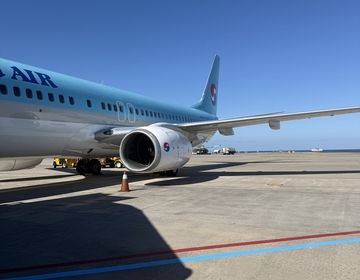
Soul Searching in Seoul: Everything I Learned and What I Wish I Knew
Before I start crafting my “study abroad changed me” answers for friends and family, here are the practical things I wish I’d known. The things that would’ve saved me time... keep reading
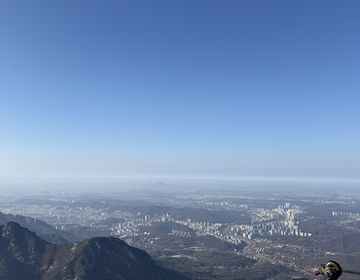
A Seoul Escape to Bukhansan
Get out of the hustle and bustle of Seoul and head to the peak of Bukhansan!
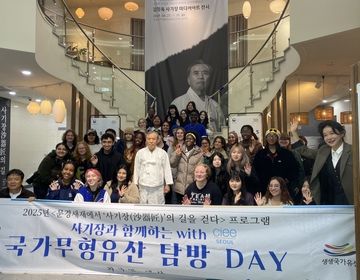
My Time in South Korea Attending Yonsei University: A Life-Changing Chapter
By: Zahrraa Al-Salman Studying abroad had always been a dream of mine—an opportunity to step outside of my comfort zone, immerse myself in a new culture, and deepen my understanding... keep reading
